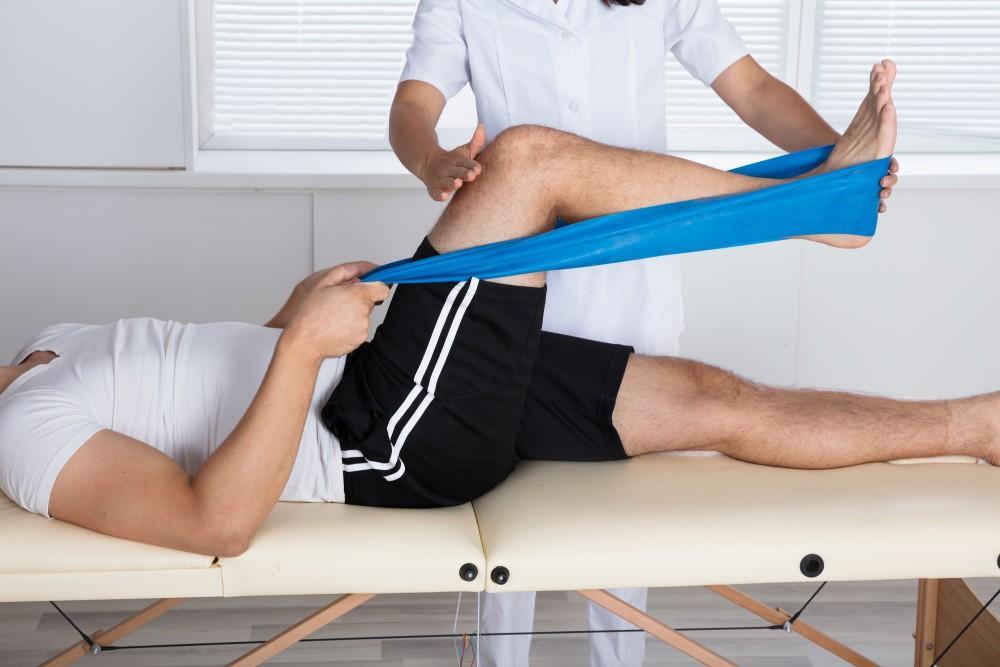
What You Need To Know About Physical Therapy After Your Hip And Knee Replacement Surgery

A successful surgery depends on more than just a good surgeon. Upon leaving the hospital it is important that our patients remember that it will be up to their hard work with and without a physical therapist to achieve excellent results from their new joint.
One thing that is unique with team Karas is that each patient will have the privilege of working from the comfort of their home for the first one to two weeks post-surgery with our very own Physical Therapist, Bryce Renicker.
Bryce will help to make the beginning of your physical therapy (PT) as easy and convenient as possible to springboard your success in your PT journey. By offering this initial in-home care, patients do not have to worry about traveling anywhere so soon after surgery to begin their PT work and also receive extremely personalized sessions. Bryce works with each individual to help them learn the movements with their new joint, begin the strength building process and increase mobility from the very beginning.
There are a few aspects to hip and knee surgery that you can expect from a PT standpoint as well as some limitations early on to keep in mind. As you continue through the PT process, your physical therapist will work with you to monitor your progress and move you along as they see fit.
Specifics for knee surgery patients:
Precautions for PT:
- Weight bearing as tolerated, unless otherwise specified
- Gait: progression from the use of an assistive device to unassisted ambulation is encouraged post-op as balance and safety permit
- Progression is per your physical therapist discretion with the ultimate goal of no gait deviations
Exercise specifics:
- Very important to be able to fully straighten the knee in order to walk properly and to regain proper strength, as well as to be able to fully bend the knee.
- Extend and elevate the surgical knee while sleeping and sitting
- Working on increasing your range of motion is the ultimate goal
- Bone healing can take 6-8 weeks; be patient with the process
- Once swelling and pain has decreased, begin strengthening the quad and hip
- No pool therapy for 6 weeks post-op
Specifics for hip surgery patients:
Precautions for PT:
- Weight bearing as tolerated, unless otherwise specified
- Utilize hip precautions for 6 weeks post-op:
- No crossing your legs or other internal rotation movements
- No hip extensions or external rotation movements
- No bending at the hip past 90 degrees
- Sleep on non-operative hip with pillow in between knees or on your back
- Gait: progression from the use of an assistive device to unassisted ambulation is encouraged post-op as balance and safety permit
- Progression is per your physical therapist discretion with the ultimate goal of no gait deviations
Exercise Specifics:
- No straight leg exercises during therapy
- IT band and rectus stretching are encouraged
- Bone healing can take 6-8 weeks; be patient with the process
- Once swelling and pain has decreased, begin strengthening the quad and hip
- No pool therapy for 6 weeks post-op
As you embark on your physical therapy journey, it is important to remember that it is a process and that everyone heals at different rates. Trust the process and trust your physical therapist. But more importantly, be patient with yourself and with the journey. And invest in the time needed to ensure you are setting yourself and your new joint up for excellence.
You Might Also Enjoy...


Outpatient Physical Therapy In the Home – Getting Your Recovery Process Started in the Comfort of Yo

Robotics in Arthroplasty

Why Physical Therapy Is Key to a Successful Joint Replacement

Signs Your Joint Pain Might Be Serious


